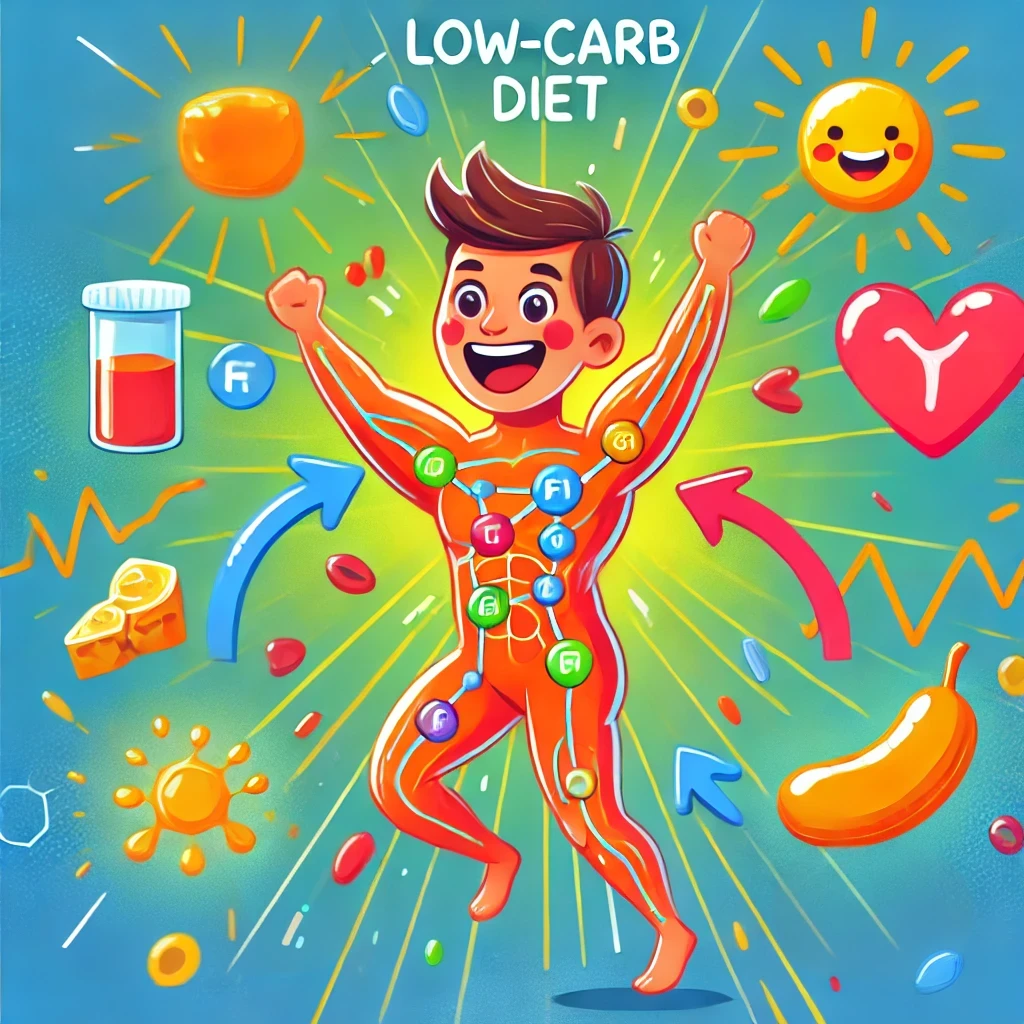
Introduction
Switching to a low-carb diet can feel like a major change, especially if you’re used to relying on carbs for quick energy. But understanding the physiological processes that kick in with low-carb eating can help clarify why it’s so effective for energy and weight management. Here’s a breakdown of how your body utilizes energy on a low-carb diet, how it makes glucose when needed, and why this approach can keep you energized and focused.
How Low-Carb Eating Affects Energy Utilization
1. Reduced Blood Glucose and Insulin Response
When you reduce carbohydrate intake, less glucose is available from food. Blood sugar levels remain lower, leading to more stable energy without the frequent spikes and dips associated with high-carb meals. Because less insulin is needed to regulate blood sugar, the body gains easier access to fat stores for energy.
2. Shift to Fat as the Primary Fuel: Lipolysis and Ketosis
In the absence of carbs, the body enters lipolysis, where stored fat is broken down into fatty acids. These fatty acids are either used directly by muscles or converted into ketones by the liver. Ketones provide an alternative energy source, especially useful for the brain, and allow the body to thrive even on minimal carb intake.
3. Gluconeogenesis: Producing Glucose from Non-Carb Sources
Some cells, like red blood cells, still require glucose even in a low-carb state. Through gluconeogenesis, the body makes glucose from non-carb sources like amino acids and glycerol from fat. This glucose is sufficient for specific cell functions without requiring dietary carbs.
4. Stable Energy Levels and Reduced Hunger
Fat and ketones offer a steady, long-lasting energy source. Unlike carbs, which are quickly digested, fats provide consistent fuel, reducing hunger and making it easier to avoid frequent meals. This stability is one of the reasons people on low-carb diets report fewer cravings and better energy.
5. Preservation of Muscle and Metabolic Rate
Using fats and ketones helps preserve muscle tissue, especially compared to calorie-restricted, high-carb diets where muscle may be broken down for glucose. Low insulin levels and supportive hormones like growth hormone and norepinephrine also help maintain the Basal Metabolic Rate (BMR).
Conclusion
A low-carb diet shifts the body’s energy reliance from carbohydrates to fats and ketones, ensuring energy stability, muscle preservation, and metabolic health. By efficiently utilizing stored fat and producing glucose as needed, the body can thrive on a low-carb lifestyle, supporting long-term weight and health goals.
Citations
- Paoli, A., Rubini, A., Volek, J. S., & Grimaldi, K. A. (2013). Beyond weight loss: a review of the therapeutic uses of very-low-carbohydrate (ketogenic) diets. European Journal of Clinical Nutrition, 67(8), 789–796. Link to study
- Cahill, G. F. (2006). Fuel metabolism in starvation. Annual Review of Nutrition, 26, 1-22. Link to study
- Boden, G., Sargrad, K., Homko, C., Mozzoli, M., & Stein, T. P. (2005). Effect of a low-carbohydrate diet on appetite, blood glucose levels, and insulin resistance in obese patients with type 2 diabetes. Annals of Internal Medicine, 142(6), 403–411. Link to study
